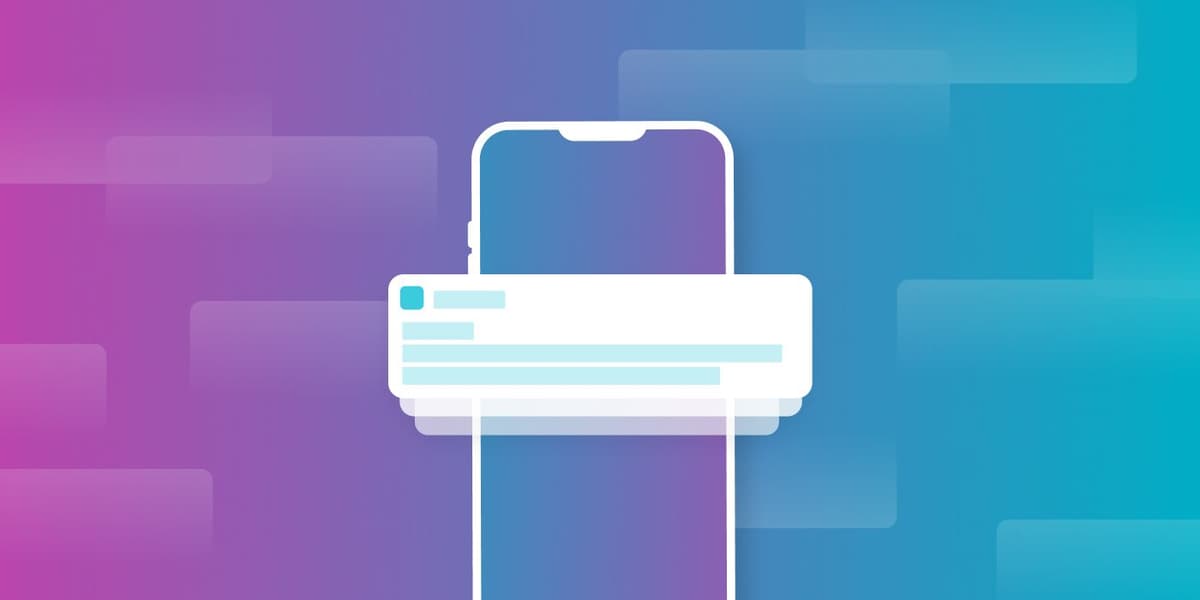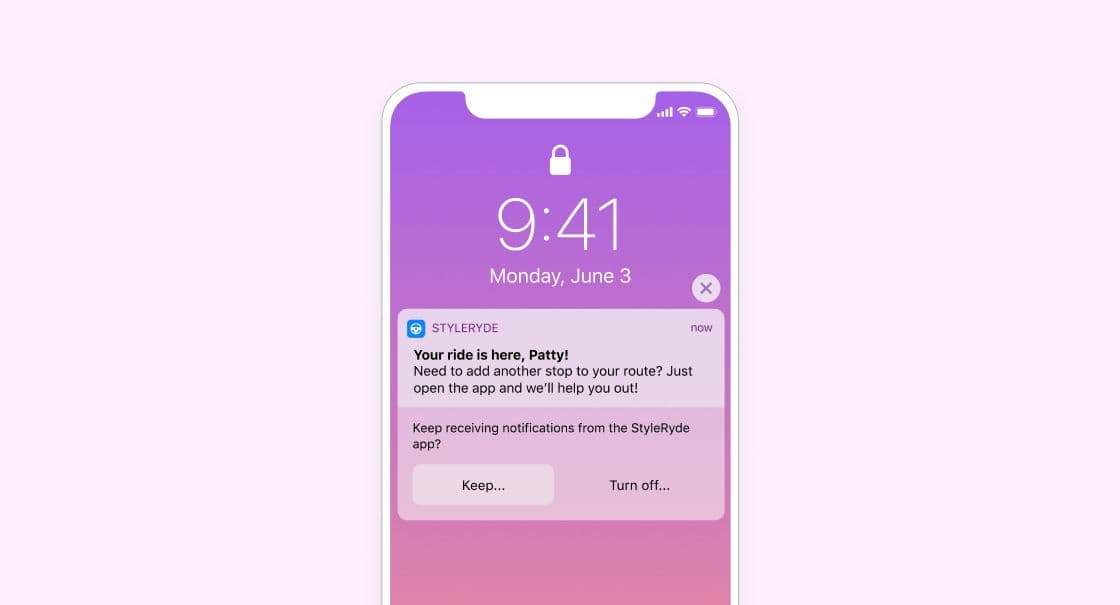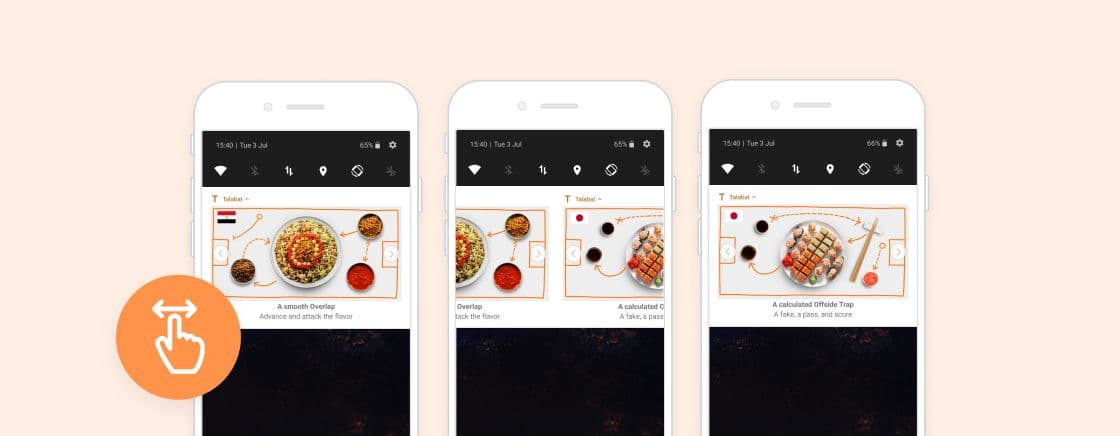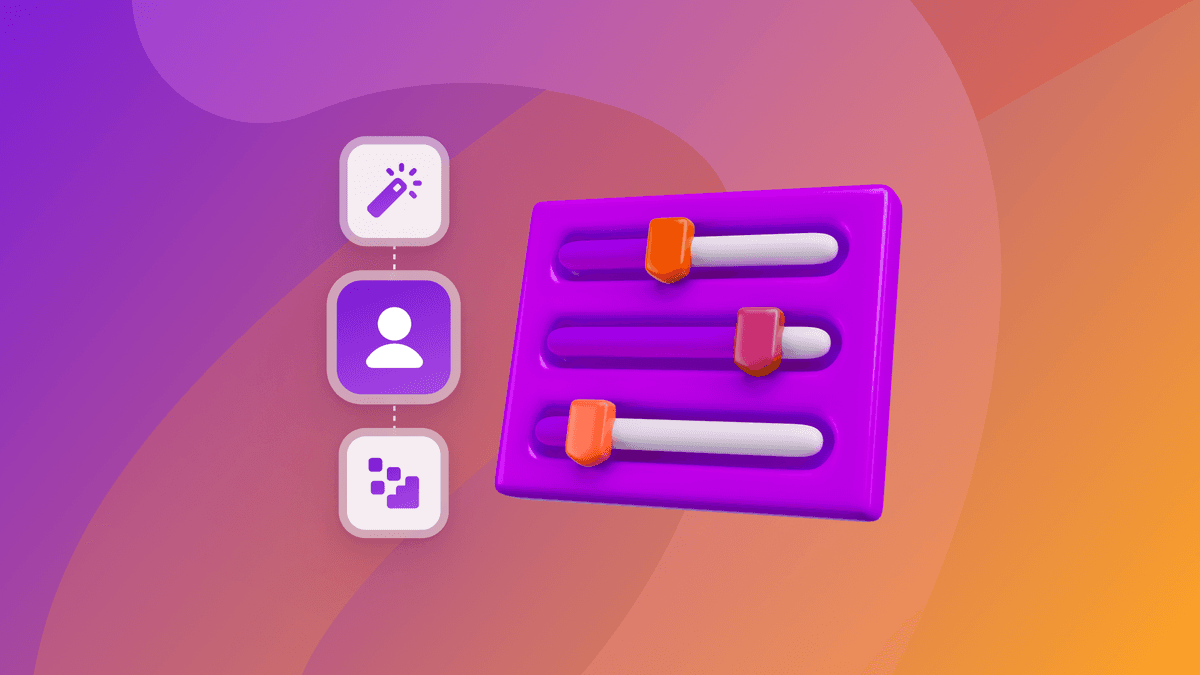Crawl, Walk, Run: Adding Push To Your Cross-Channel Strategy
Published on October 12, 2020/Last edited on October 12, 2020/7 min read


Elana Delasos
Strategic Brand Partnerships ConsultantIf there’s one thing we know people don’t leave home (or even a room in their home) without, it’s technology. Smartphones, wearables, and laptops are all tools that help us stay on top of every daily occurrence, whether that’s connecting with friends, catching up on current affairs, or staying in-the-know with push notifications from brands who hold helpful information. But while many brands utilize push notifications to get their message out there, most are not using this messaging channel to its full potential.
Maybe they use generic copy that doesn’t catch the eye. Or maybe they’re stuck in the past and use push notifications as a one-off play. It could be that the opt-in list is not being segmented and targeted based on customers’ habits or interaction with a brand’s app. Whatever the case may be, identifying the process of building and developing a scalable, sustainable, and effective push notification strategy is the first step. To help out, we’ve outlined a three-stage method to help brands increase customer engagement just by adding push to their plan.
So let’s dive in!
Stage One: Build an Engaged and Messageable Audience
It’s been proven: Push notifications increase engagement compared to campaigns with no mobile messaging. But only customers who have enabled push messages are reachable on this channel. What that process looks like is different for different mobile platforms: For Android users, those permissions are granted at download, while Apple requires iOS users to explicitly opt in before brands can send them push notifications under most circumstances. That’s why building a push audience is trickier than doing the same on other platforms—thankfully, the pay-off is worth it, with users who receive push seeing 191% more engagement, compared to those who received no messages.
If you’re building your list from the ground up, it’s important to show customers that your alerts hold value. On iOS, Apple’s support for provisional push notifications offer brands the opportunity to do just that. Basically, brands now have the chance to engage iOS customers in somewhat of a “trial pass,” allowing them to reach out to new users before they’ve seen (and clicked) Apple’s native push opt-in prompt.

If you already have an existing list, it’s crucial that you utilize data, technology and effective cross-team collaboration to make sure each and every push you send is tailored. 78% of customers will opt-out or uninstall an app entirely if they receive notifications they aren’t happy with, so maintaining effective communication with your existing audience is an ongoing (yet rewarding) task that requires a creative and data-driven strategy. This kind of thoughtful, data-driven approach is key to keeping you automatically opted-in Android users engaged with the push messages you send, while also safeguarding those safeguarding those hard-won iOS opt-ins. After all, no matter what kind of phone people use, no one wants to receive irrelevant or frustrating messages!
This leads to our next point: What brands say and when they say it is the foundation to keeping customers engaged, and for that you need to build foundational campaigns that ensure you get the most out of push as part of a larger marketing strategy.
Stage Two: Build Foundational Campaigns with Push as Part of Your Cross-Channel Marketing Strategy
The first step in developing an effective marketing campaign is creating a message that gets your point across. Blasting out full-audience, generic campaigns should be a thing of the past; to compete today, you need to find the content that will keep your customers wanting more. They don’t want to feel like they’re being spoken to by a robot (which can be hard when you’re communicating with them via automated technology), so it’s crucial to make the message feel human and interactive.One key consideration? Relevance. Regardless of the type of message you choose to send, it is important to leverage segmentation based on customer interaction with your app and personalization to ensure that the outreach you’re delivering is highly relevant to the people receiving it. Done right, this kind of customization helps your brand come across as a trusted advisor who can tailor recommendations that align with customer preferences.
So, now you have your customer base and your message is ready to go. The next step is to schedule push notifications in a way that helps you to cut through the noise.

There are four major push scheduling types that have proven to be successful:
- Time-Based Scheduling (where you end campaigns immediately or at a pre-chosen time)
- Action-Based Scheduling (where you automatically trigger push notifications the moment someone takes a specific action)
- Send-Time Optimized Scheduling (where you automatically send messages during each individual's unique high-engagement windows)
- API-Triggered Scheduling (where you rigger messages in connection to information in your own proprietary servers or systems, or from an external API)
Each schedule is based on customer preferences and daily habits, making it more likely that customers will not only see the push, but also take action—and we’ve seen it work firsthand.
Take the American Cancer Society who recently worked with Braze to create a push notification plan surrounding Relay for Life. By identifying key moments leading up to and during the event, ACS managed to maintain engagement and encourage participation and fundraising by linking alerts to the progress made throughout each individual’s fundraising efforts. This ultimately led to a 34% increase in in-app fundraising dollars, and this isn’t the only campaign that we’ve seen go so well—you can ask Sephora and Burger King, too.
Ultimately, stage two is a two-part process consisting of perfecting your message based on customer data insights. You must be clear in the content that you send and send it at a time when customers are more likely to take action.
Stage Three: Drive Value with a Sophisticated, Customer-Centric Marketing Approach
By stage three, you’ve developed a targeted and messageable audience and a clear, engaging way to reach them. Voila, you’re now ready to drive value for your customers through push notifications in increasingly sophisticated, effective ways.

One great way to make that happen? Rich push. The use of rich push notifications is the perfect way to surprise and delight customers with arresting visuals, and potentially increase conversions by up to 57%. With the Braze platform’s Push Stories feature, brands can insert carousel-like interactive image galleries within individual push notifications in conjunction with interaction– and action–based buttons, allowing brands to engage with customers beyond their app or website.
Understanding the pros and cons of push is the basis of developing a sophisticated campaign. While push is a great way to reach many consumers, it’s not meant for all—and that’s why push is most effective when it is part of a larger cross-channel campaign that reaches different customers on the platforms they value most. (For an in-depth look at cross-channel engagement and how it can drive stronger results, check out our cross-channel data report.)
Final Thoughts
All in all, push notifications have been around for over a decade, and over the years we’ve continued to see bigger and better developments that help brands utilize it as an increasingly powerful messaging tool. At the same time, if not handled properly, push campaigns can alienate customers and reduce the impact of your messaging strategy. That’s why developing your plan based on data and the understanding of the proper times and platforms to use push are needed to develop a scalable, sustainable and effective marketing strategy.
To learn more about expanding your messaging onto push, check out our exclusive guide to all things push notification.
Related Tags
Be Absolutely Engaging.™
Sign up for regular updates from Braze.
Related Content
View the Blog
How behavioral marketing turns data into personalized experiences

Team Braze

The new inbox reality: How iOS changes are reshaping email marketing

Aparna Prasad

Experience optimization: Turning data insights into better journeys
